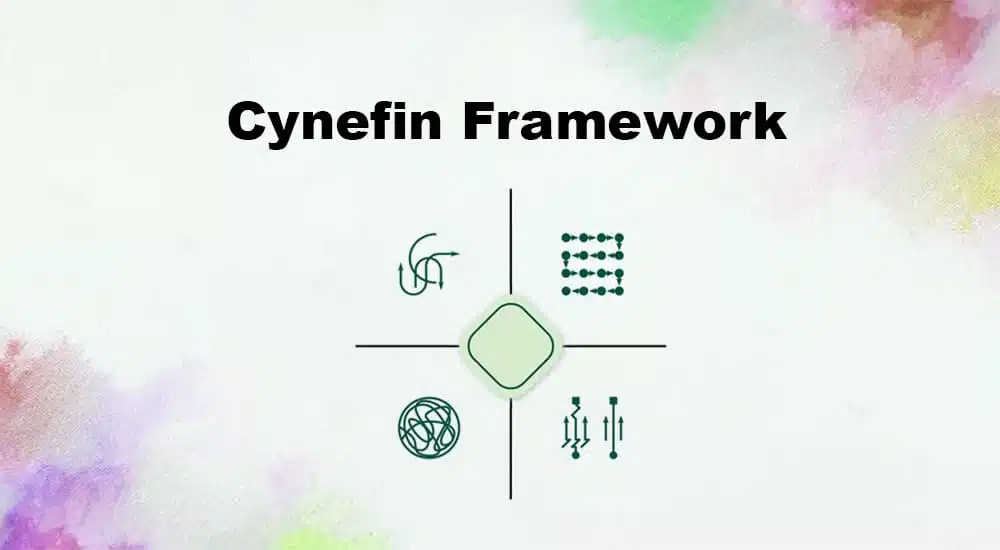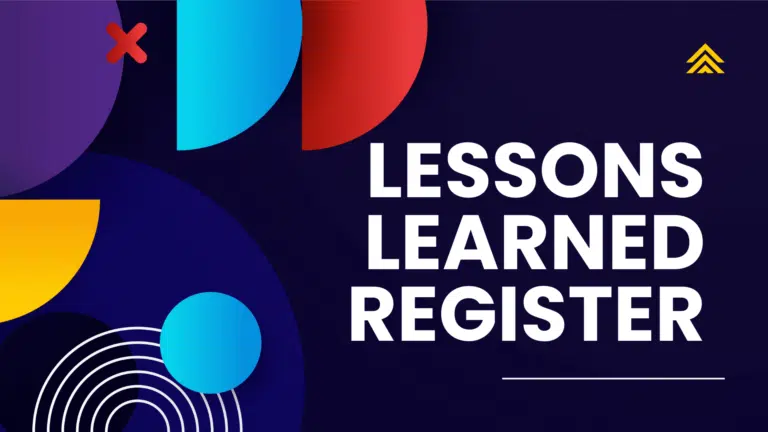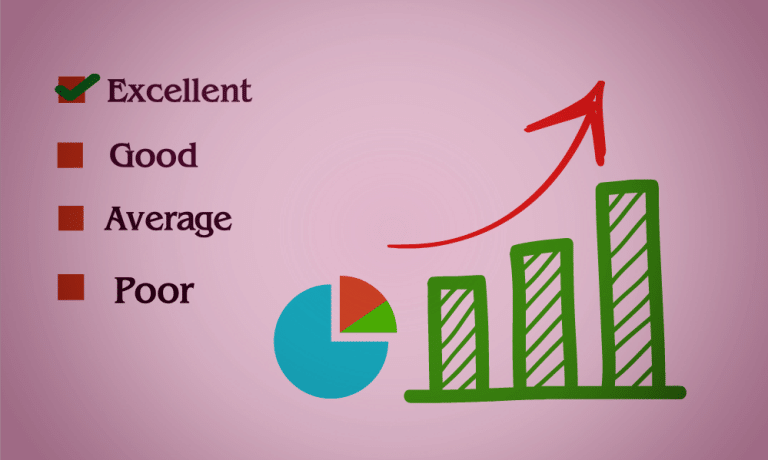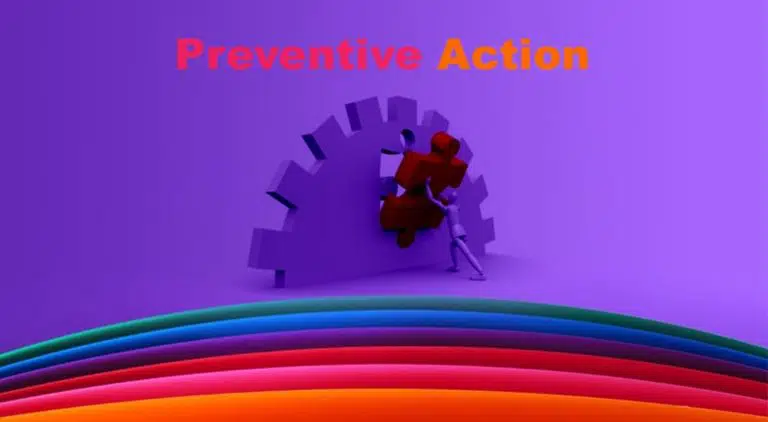Leaders face many challenges and complexities in today’s dynamic and interconnected era. Understanding, categorizing, and addressing intricate issues has become fundamental for organizations that seek to thrive in uncertainty.
The Cynefin Framework emerges as an indispensable tool, empowering leaders or managers to embrace complexity and find clarity in ambiguity.
What is the Cynefin Framework?
The Cynefin Framework (pronounced as “ku-nev-in”) originated from the Welsh word “Cynefin,” meaning “habitat” or “place of being.” The Cynefin Framework is a sensemaking model that offers a comprehensive approach to understanding and managing diverse problem domains.
This sensemaking model was developed by Dave J. Snowden in 1999 to help leaders make decisions while working for IBM Global Services.
David Snowden described this framework using knowledge-management concepts and organizational strategies. He published the Cynefin Framework with his colleague Mary Boonein in the November 2007 issue of the Harvard Business Review.
The Cynefin Framework Domains
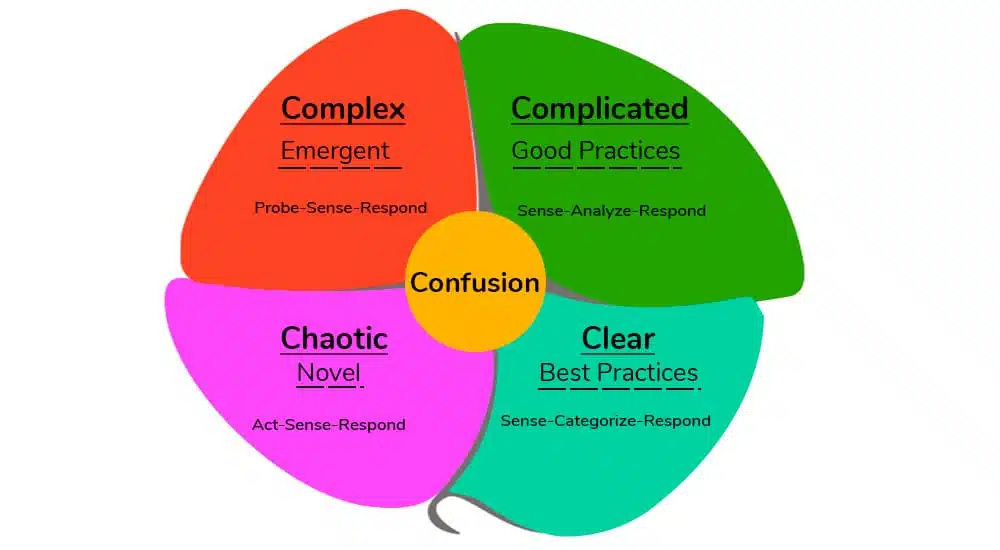
The Cynefin Framework defines domains by cause-and-effect relationships.
These domains are:
- Clear
- Complicated
- Complex
- Chaotic
- Confusion
These domains help leaders understand that every situation is different and requires a unique approach to decision-making.
Each domain has a specific decision-making approach that helps leaders understand the situation better and choose the best way forward.
#1. Clear
This is the domain of best practices for “known knowns,” meaning the situation is stable, rules are in place, and managers can see the clear relationship between cause and effect.
For example, if you do this, that will happen.
Here, you should “sense–categorize–respond.” Using sense, establish the facts, categorize the issues, and respond using best practices. The situation is clear, and you have clear choices. Cause-and-effect relationships are apparent to all stakeholders.
For example, an issue during a hot tap connection is normal, and supervisors have a solution. If some known issue occurs, they will apply the solution right away.
Here you will assess the situation, categorize its type and then base your response on the best practices. You will have the correct answer for the situation.
Sometimes, the gravity of the situation is ignored due to oversimplification and overconfidence. Therefore, communication must be simple, clear, and robust.
Often leaders are not receptive to new ideas as they are sure that the available best practice is the best and there is no possibility of improvement. Leaders must be open to new ideas.
#2. Complicated
This is the domain of experts for “known unknowns.” Managers need skills and expertise to identify the relationship between cause and effect. Leaders have a range of solutions.
In this domain, project managers should “sense–analyze–respond.”
The problem is complicated, and it has many solutions. The relationship between cause and effect is clear but only visible to experts, as the issue is complicated.
For example, you can have many routes to reach the destination, but experts know which route is the fastest and better to reach the destination with the least hassle.
You will assess the situation, analyze what is known, and decide the response using the best practice.
#3. Complex
This is the domain of emergence for “unknown unknowns.” Here, leaders can deduce the cause and effect in retrospect and have no answers. According to Snowden, “instructive pattern … can emerge.”
Here, you should “probe-sense-respond.”
Finding the correct solution or identifying the cause-and-effect relationship here is difficult. The best solution is to be patient, analyze the pattern, and then encourage a solution to emerge.
Communication is key here. Gather experts, seek their opinion, and devise an innovative solution to the complex problem using good practices.
Complicated and complex domains share many similarities, and sometimes it is difficult to identify from each other. However, if the information is incomplete, the domain is most likely the complex domain.
#4. Chaotic
Chaotic contexts are the domain of rapid response. Here, both cause and effect are not clear. Events are too confusing to develop a suitable logical knowledge base response.
Since it is chaos, your first objective is establishing order and stability. Emergency and crises fall into this domain.
Here, you should “act–sense–respond.” Act to establish order, sense it and then respond. The aim is to turn the chaotic situation into a complex and control it.
Project managers must be decisive enough to solve hot-button issues and respond quickly enough to move situations from chaos to complexity. Project managers must ensure that they have a comprehensive risk-and-crisis-management plan to deal with such situations.
#5. Confusion
This domain was known as “disorder” in an earlier version of the theory. In the confusion domain, total confusion reigns supreme, and leaders do not know the dominant domain.
Since you cannot determine the dominant domain, your goal will be to gather information so you can move to a known domain and act accordingly.
Snowden states, “Multiple perspectives jostle for prominence, factional leaders argue with one another, and cacophony rules.”
According to Snowden and Boone, “The way out of this realm is to break down the situation into constituent parts and assign each to one of the other four realms. Leaders can then make decisions and intervene in contextually appropriate ways.”
Applying the Cynefin Framework
The Cynefin Framework is a sensemaking model that helps businesses make decisions and understand the complexity of different situations.
Some applications of the Cynefin Framework are:
- Decision-Making: The Cynefin Framework can guide decision-making processes by categorizing situations into different domains. Project managers can use it to determine whether a problem is simple, complicated, complex, or chaotic and then suggest the appropriate approach for each domain.
- Problem-Solving: Project managers can use it to solve problems with a structured approach based on the nature of the problem. It encourages them to analyze and understand the complexity of a problem before selecting the appropriate methods, tools, and strategies for resolution.
- Strategy Development: The Cynefin Framework is useful for assessing context and determining suitable strategies for different domains. Leaders can use it to understand the nature of their environment, identify patterns, and make informed decisions on their direction and the actions they must take to get there.
- Organizational Change: When implementing organizational change, the Cynefin Framework assesses the complexity of the change effort. It helps change managers determine whether the change is simple, complicated, or complex, thus allowing organizations to tailor their change-management approaches accordingly.
- Innovation and Product Development: The Cynefin Framework can guide innovation and product development. By understanding market complexity, organizations can choose the appropriate methods to generate ideas, test prototypes, and adapt to changing circumstances.
- Project Management: The Cynefin Framework helps project managers assess the complexity and uncertainty involved. Project managers can use it to determine the appropriate project-management approach, communication strategies, and risk-management techniques based on the project’s context.
- Leadership and Team Dynamics: The Cynefin Framework can assist leaders with understanding their team’s complexity and adjusting their leadership style accordingly. It also encourages leaders to be flexible and adapt their approach based on the domain in which their teams operate.
Example of the Cynefin Framework
The technical-support agent must first assess the situation to determine whether it is clear, complicated, complex, or chaotic.
The agent can follow a standard process to resolve the issue if the situation is clear. For example, the agent might check the Knowledge Base to see if there is a known issue with the customer portal.
If the situation is complicated, the agent might need to gather more information from the customer to troubleshoot the issue. For example, the agent might need to ask the customer what steps they took before they noticed the slow response.
If the situation is complex, the agent might need to work with other teams to resolve the issue. For example, the agent might involve the development team to fix a bug in the customer portal.
If the situation is chaotic, the agent might need to act quickly and decisively to resolve the issue. For example, the agent might need to disable the customer portal until the issue is fixed.
Benefits of the Cynefin Framework
- Provides a structured framework to understand complex systems and problems
- Categories and makes sense of different types of problems and their solutions
- Enhances decision-making by promoting a more nuanced and context-specific approach
- Facilitates better communication and collaboration among team members by creating a shared understanding of the problem domain
- Enables organizations to identify and prioritize areas of improvement or intervention
- Reduces the risk of ill-informed decisions by considering a situation’s inherent complexity and/or uncertainty
- Encourages an adaptive and flexible mindset, thus promoting agility and resilience in the face of complex challenges
- Identifies patterns and trends within a system to help develop strategies and interventions
- Provides a learning and knowledge-management tool by capturing insights and lessons from different problem domains
- Explores multiple perspectives and encourages diverse thinking, thus leading to more innovative and effective solutions
The Cynefin Framework Vs the Theory of Constraints
The Cynefin Framework and the Theory of Constraints (ToC) are frameworks used to understand and address complex problems in different domains. Although both frameworks have distinct approaches, they can be complementary in some situations.
The Cynefin Framework was developed by Dave Snowden, and it categorizes problems into five different domains: (1) clear, (2) complicated, (3) complex, (4) chaotic, and (5) confusion. It identifies appropriate approaches to find solutions based on the problem. The Cynefin Framework emphasizes different management styles for different problems, thus encouraging leaders to adapt their decision-making processes accordingly.
The Theory of Constraints was formulated by Eliyahu Goldratt, and it focuses on identifying and removing bottlenecks within a system. It improves the system’s overall efficiency and productivity by pinpointing the constraints that limit the system’s performance. By systematically addressing these constraints, project managers can optimize their processes and improve efficiency.
While Cynefin provides a broader framework for understanding problem domains, ToC offers a specific methodology for improving system performance. In practice, these approaches intersect and complement each other.
For example, Cynefin can help determine whether a problem is best addressed through a ToC or requires a different management approach.
Summary
The Cynefin Framework helps leaders and managers understand their challenges and make decisions accordingly. It identifies the type of situations project managers face and ensures that their actions are based on reality and makes sense.
This framework is useful across all industries and sectors (e.g., business, project management, production, policymaking, healthcare, etc.).
References
Snowden, D., & Goh, Z. (2020). Cynefin—Weaving Sense-Making into the Fabric of Our World.
Cognitive Edge: The Origins of Cynefin

I am Mohammad Fahad Usmani, B.E. PMP, PMI-RMP. I have been blogging on project management topics since 2011. To date, thousands of professionals have passed the PMP exam using my resources.

